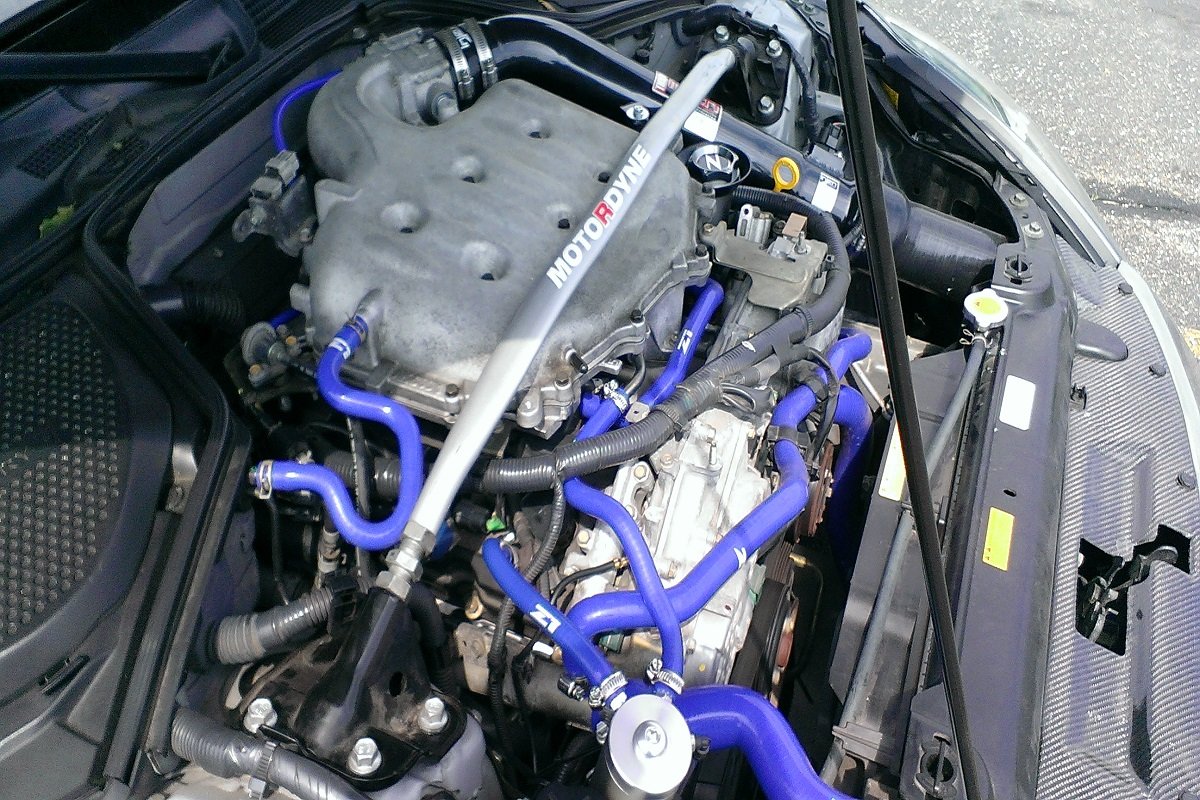The Nissan 350Z is a car that enthusiasts around the world admire for its powerful V6 engine, sleek design, and performance capabilities. However, like any vehicle, it can experience its share of issues over time. One problem that can arise is a lack of350z no vacuum at idle. This issue can affect engine performance, fuel economy, and even the car’s drivability. In this article, we’ll delve into the potential causes of this problem, how to diagnose it, and steps to fix it.
Understanding Engine Vacuum
Engine vacuum is an essential aspect of a vehicle’s operation. It is created by the movement of pistons within the engine’s cylinders and is most noticeable at idle when the throttle is closed. This vacuum powers many systems in the car, including the brake booster, PCV (positive crankcase ventilation) system, and other emissions-related components. If there is no vacuum at idle, it can indicate a serious issue within the engine or its connected systems.
Symptoms of No Vacuum at Idle
Before diving into the causes, it’s important to identify the symptoms of a lack of vacuum at idle. These can include:
- Rough Idling: The engine may feel unstable or shake more than usual when idling.
- Check Engine Light: A vacuum issue can trigger error codes that cause the check engine light to illuminate.
- Decreased Brake Performance: Since the brake booster relies on vacuum, a lack of vacuum can lead to a hard brake pedal and decreased braking efficiency.
- Poor Fuel Economy: Vacuum leaks can cause the engine to run lean or rich, which affects fuel efficiency.
- Reduced Power: Engine performance might suffer due to an incorrect air-fuel mixture.
Common Causes of No Vacuum at Idle
- Vacuum Leaks: Vacuum leaks are one of the most common reasons for a lack of vacuum at idle. These leaks occur when unmetered air enters the engine, disrupting the air-fuel mixture. Leaks can happen in several places, including:
- Intake manifold gaskets
- Vacuum hoses
- Throttle body gasket
- PCV valve and hoses
- Faulty PCV System: The PCV valve regulates pressure in the crankcase and ensures proper engine ventilation. A clogged or faulty PCV valve can cause a loss of vacuum.
- Throttle Body Issues: A dirty or malfunctioning throttle body can restrict airflow and affect vacuum levels. Carbon buildup or a stuck throttle plate may prevent the engine from maintaining adequate vacuum.
- Intake Manifold Problems: Cracks or warping in the intake manifold can lead to vacuum leaks. The manifold is crucial for distributing air to the engine cylinders, and any damage can disrupt this process.
- EGR Valve Malfunction: A stuck-open Exhaust Gas Recirculation (EGR) valve can allow exhaust gases to enter the intake manifold at idle, which reduces vacuum.
- Brake Booster Issues: A failing brake booster can leak vacuum and affect the entire system. This is particularly noticeable if the brake pedal becomes hard to press.
Diagnosing the Problem
To identify the root cause of no vacuum at idle, follow these diagnostic steps:
- Visual Inspection:
- Check all vacuum hoses for cracks, disconnections, or signs of wear.
- Inspect the intake manifold and throttle body for obvious signs of damage or leaks.
- Smoke Test:
- A smoke test can help pinpoint vacuum leaks. Smoke is introduced into the intake system, and any escaping smoke indicates a leak.
- Vacuum Gauge Test:
- Connect a vacuum gauge to the intake manifold. At idle, the vacuum reading should typically be between 18-22 inHg. Lower readings indicate a potential issue.
- Check Engine Codes:
- Use an OBD-II scanner to retrieve any stored error codes. Common codes related to vacuum issues include P0171 (System Too Lean) or P0507 (Idle Control System RPM Higher Than Expected).
- Brake Booster Test:
- With the engine off, press the brake pedal several times to deplete any residual vacuum. Hold the pedal down and start the engine. If the pedal doesn’t drop slightly, there may be an issue with the brake booster.
Fixing the Issue
Once you’ve diagnosed the problem, it’s time to fix it. Here are the steps based on common causes:
- Repair Vacuum Leaks:
- Replace damaged or cracked vacuum hoses.
- Replace intake manifold gaskets or throttle body gaskets if leaks are found.
- Tighten any loose clamps or fittings.
- Replace Faulty Components:
- Install a new PCV valve if the current one is faulty.
- Clean or replace the throttle body if it’s dirty or malfunctioning.
- Replace a stuck or damaged EGR valve.
- Address Brake Booster Issues:
- If the brake booster is leaking, it may need to be replaced.
- Professional Help:
- If the issue persists after addressing the above, consult a professional mechanic. They have specialized tools and expertise to diagnose and repair complex engine issues.
Conclusion
A lack of vacuum at idle in a Nissan 350Z can lead to significant performance and drivability issues. By understanding the potential causes, diagnosing the problem accurately, and addressing the root cause, you can restore your 350Z to its optimal performance. Regular maintenance and prompt attention to symptoms are crucial to keeping your vehicle running smoothly for years to come. If you’re not confident in diagnosing or fixing the issue yourself, don’t hesitate to seek professional assistance.
